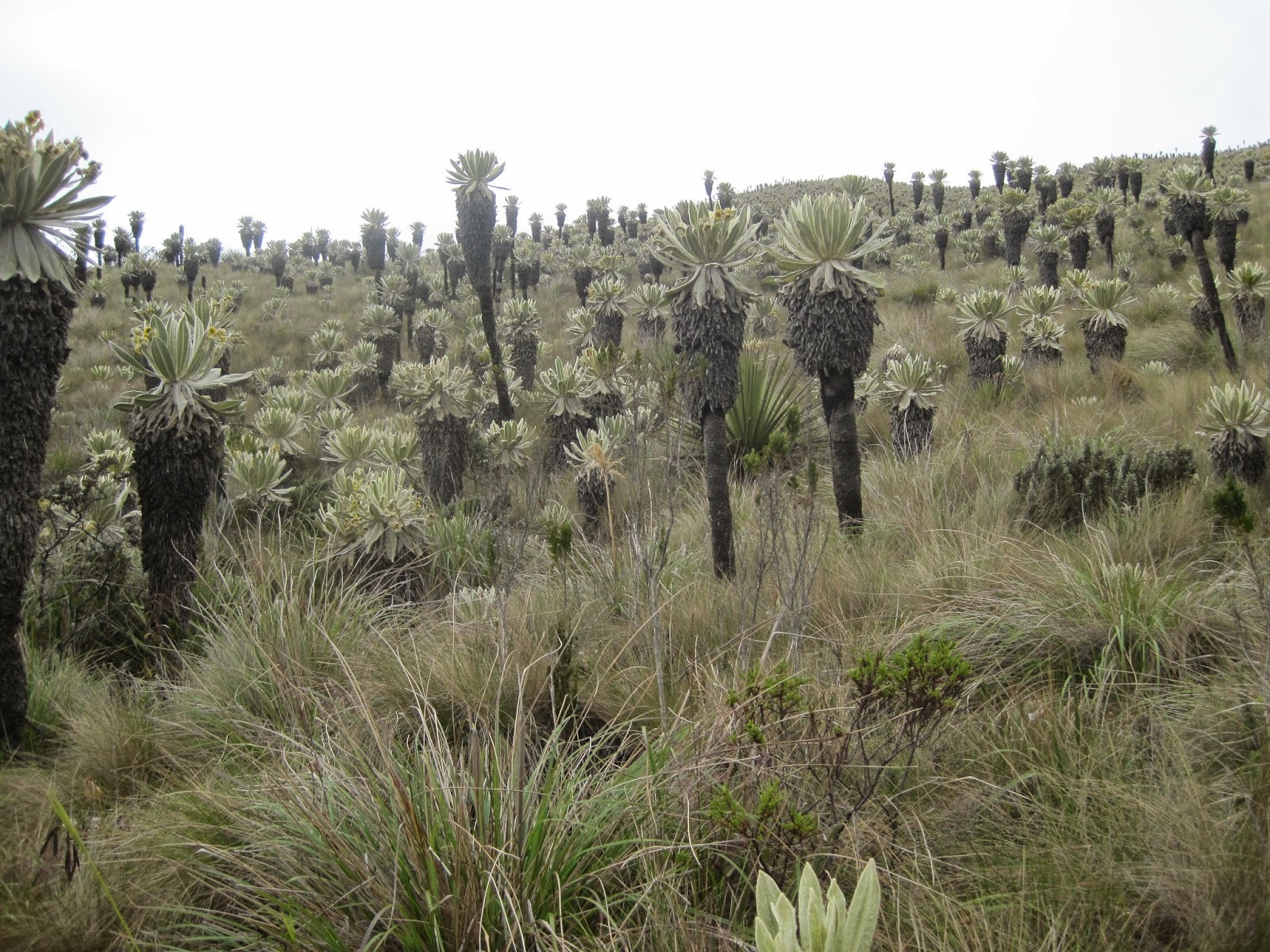Field Trip Day Part 2
We continued on to another site for more frailejones. They were in view for as far as the eye could see. So pretty.
We wound along a nature trail. The first stop was, for obvious reasons, the frailejón.
The second marker showed "straw," which was also in plain view everywhere.
Next up: "little pillows," a kind of moss that protects the soil from erosion.
Hugo, Elías and Joel press on along the train.
Romerillo is a common name of Spanish origin for several plants and may refer to:
Cortaderia jubata is a species of grass known by several common names, including purple pampas grass and Andean pampas grass. It is similar to its more widespread relative, the pampas grass Cortaderia selloana, but it can get quite a bit taller, approaching seven meters in height at maximum.
This grass is native to the northern Andes but it is well-known elsewhere as an invasive species noxious weed. This grass has only pistillate parts, that is, all individuals are female. It reproduces by apomixis, in which embryos develop without fertilization (from Wikipedia).
More frailejones.
Relaxing by the water.
Look at the lovely couple!
Clowning around.
Stop number six was the achupalla plant. Its spiny leaves appear in the most inhospitable of places on the rocky hills. Native people use it for the manufacturing of cookware, rope, bags, tools, fuel and much more.
We saw a wolf at the end of the hike and were greeted by a flat tire. But that's another story for another time!!!!
We wound along a nature trail. The first stop was, for obvious reasons, the frailejón.
The second marker showed "straw," which was also in plain view everywhere.
Next up: "little pillows," a kind of moss that protects the soil from erosion.
Hugo, Elías and Joel press on along the train.
Romerillo is a common name of Spanish origin for several plants and may refer to:
- Abies guatemalensis
- Asclepias linaria
- Baccharis sarothroides
- Bidens alba
- Podocarpus glomeratus
- Suaeda nigra
- Not sure what it refers to here. Sorry.
Cortaderia jubata is a species of grass known by several common names, including purple pampas grass and Andean pampas grass. It is similar to its more widespread relative, the pampas grass Cortaderia selloana, but it can get quite a bit taller, approaching seven meters in height at maximum.
This grass is native to the northern Andes but it is well-known elsewhere as an invasive species noxious weed. This grass has only pistillate parts, that is, all individuals are female. It reproduces by apomixis, in which embryos develop without fertilization (from Wikipedia).
More frailejones.
Relaxing by the water.
Look at the lovely couple!
Clowning around.
Stop number six was the achupalla plant. Its spiny leaves appear in the most inhospitable of places on the rocky hills. Native people use it for the manufacturing of cookware, rope, bags, tools, fuel and much more.
We saw a wolf at the end of the hike and were greeted by a flat tire. But that's another story for another time!!!!


























Comments